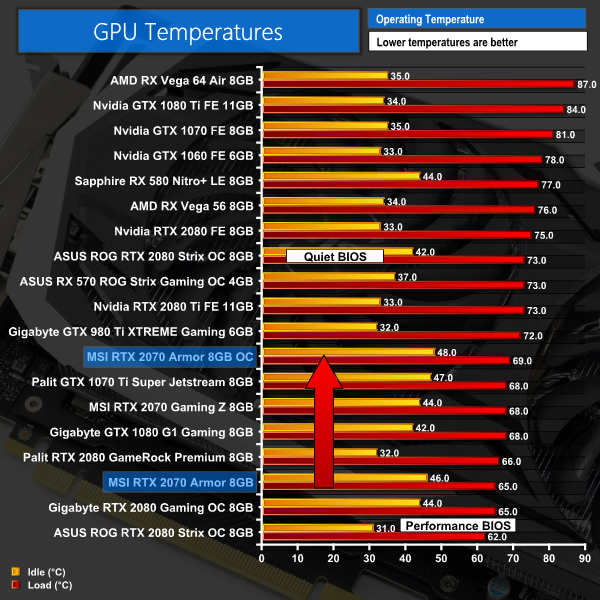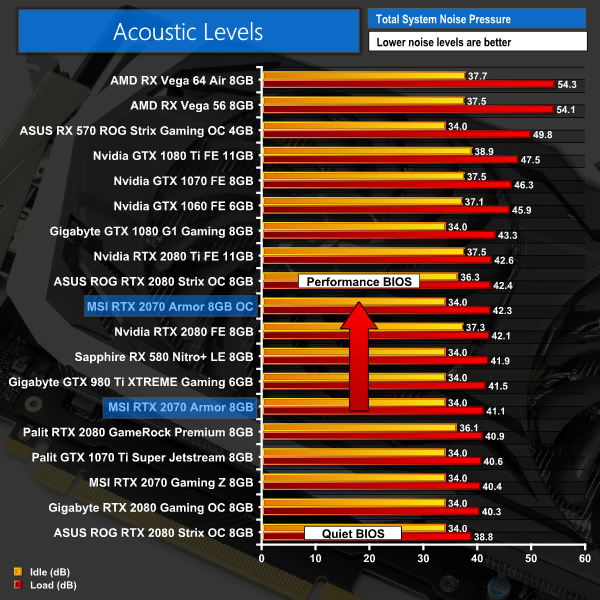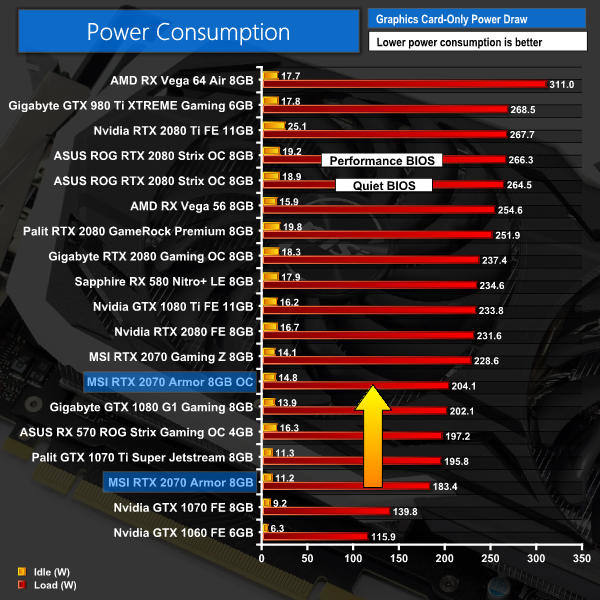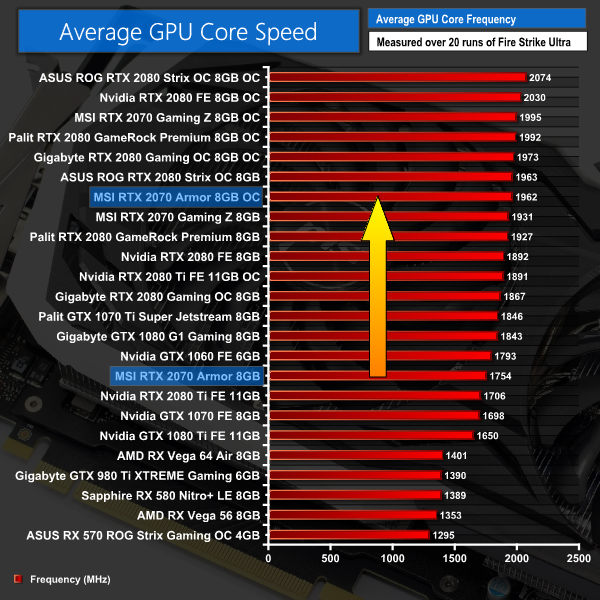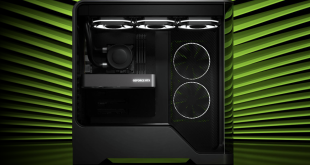Here, we take a further look at the impact of our overclock, looking at the increased temperatures, acoustics, power draw, and lastly, the effect had on the average clock speed.
Temperatures
Acoustics
Power consumption
Average clock speed under load
Overview
The Armor 8G card was easily able to handle this hefty overclock. It ran 4C hotter than when at stock clocks, but its peak temperature was still just 69C which is impressive for a relatively basic card like this. Noise levels, too, only rose an extra decibel or so, while power consumption figures jumped 21W to 204W total – which is still a very respectable figure, and less than the Gaming Z drew at stock clocks.
The clock speed, however, impressed me most – the card averaged 1962MHz with our overclock applied, which is almost 210MHz faster than stock. This pushed it ahead of the Gaming Z, and that was clearly reflected in our performance tests shown on the previous page.
 KitGuru KitGuru.net – Tech News | Hardware News | Hardware Reviews | IOS | Mobile | Gaming | Graphics Cards
KitGuru KitGuru.net – Tech News | Hardware News | Hardware Reviews | IOS | Mobile | Gaming | Graphics Cards


